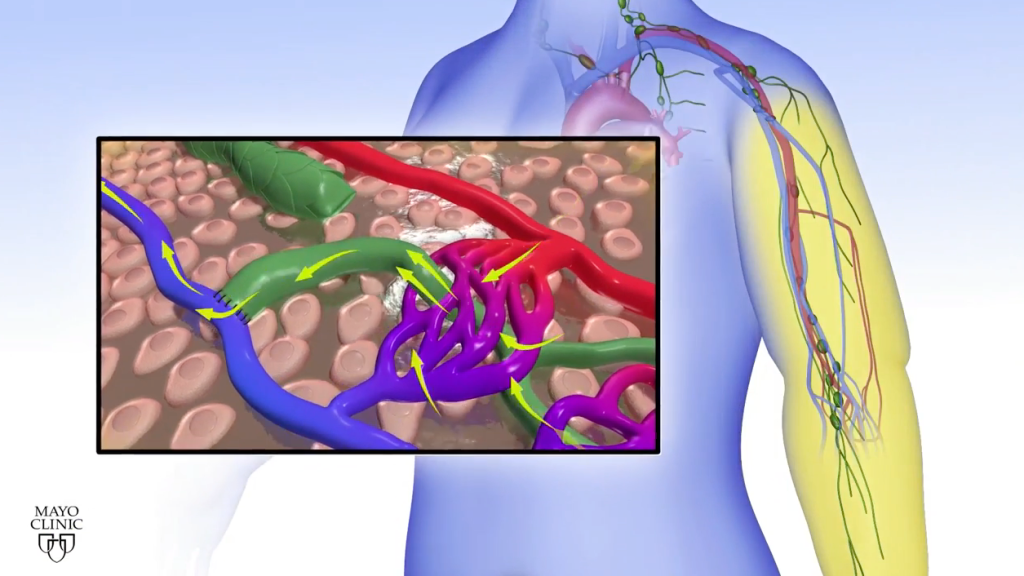-
Mayo Clinic Q&A podcast: Microsurgery can help treat lymphedema

One of the potentially painful side effects of cancer treatment is lymphedema. Lymphedema is tissue swelling caused by the buildup of fluid that's usually drained through the body's lymphatic system. Because lymph nodes are an important part of the lymphatic system, lymphedema can be caused by cancer treatments that remove or damage the lymph nodes.
"During cancer treatment, sometimes lymph nodes need to be removed, and the lymphatic system that travels around and through these lymph nodes, gets damaged as well," explains Dr. Antonio Forte, a Mayo Clinic plastic surgeon. "It's impossible to remove the lymph nodes without damaging the system."
Lymphedema most commonly affects the arms or legs, but can also occur in the chest wall, abdomen, neck and genitals. Severe cases of lymphedema can affect the ability to move the affected limb, increase the risks of skin infections and sepsis, and can lead to skin changes and breakdown.
An estimated 20% to 40% of patients undergoing an axillary lymph node dissection — removal of lymph nodes from the armpit, which is a common part of surgery for breast cancer — will develop lymphedema.
Nonsurgical treatment options include compression bandages or garments, massage, and careful skin care. If compression treatment isn't successful, a microsurgery technique, known as lymphovenous bypass, may be an option.
Microsurgery refers to the fact that the surgery is done using powerful microscopes that are magnified 20 to 25 times. Using special dye injected under the skin to identify the lymphatic pathways, surgeons then use small incisions to reroute the lymphatic system by connecting tiny lymphatic vessels to tiny veins, creating a detour around the damaged lymph nodes. The new connection restores the body's ability to drain lymphatic fluids.
Dr. Forte specializes in lymphovenous bypass surgery and has seen great benefits for patients. He points out that it's a minimally invasive procedure that can be done in an outpatient setting. The incisions are small, scarring is minimal, and patients can see significant reduction of their swelling.
"A very good study that was published almost a decade ago looked at patients that had lymphovenous bypass, and on average, 42% of the swelling improved over one year," says Dr. Forte. "Now there are patients that will have much more improvement than that. And some other patients will have very little improvement. But, on average, patients that have lymphovenous bypass surgery improve by 42%."
On this Mayo Clinic Q&A podcast, Dr. Forte explains the lymphovenous bypass procedure, who is a candidate for the surgery, and the risks and benefits of this lymphedema treatment.
Related Articles:
Watch: Dr. Forte explains lymphovenous bypass surgery.
For the safety of its patients, staff and visitors, Mayo Clinic has strict masking policies in place. Anyone shown without a mask was either recorded prior to COVID-19 or recorded in a nonpatient care area where social distancing and other safety protocols were followed.







